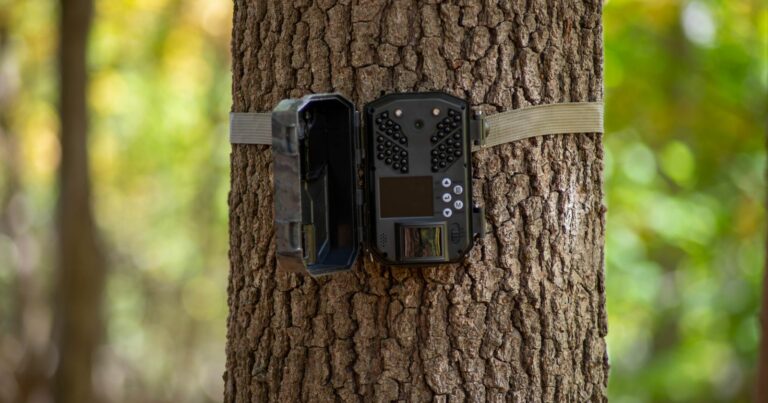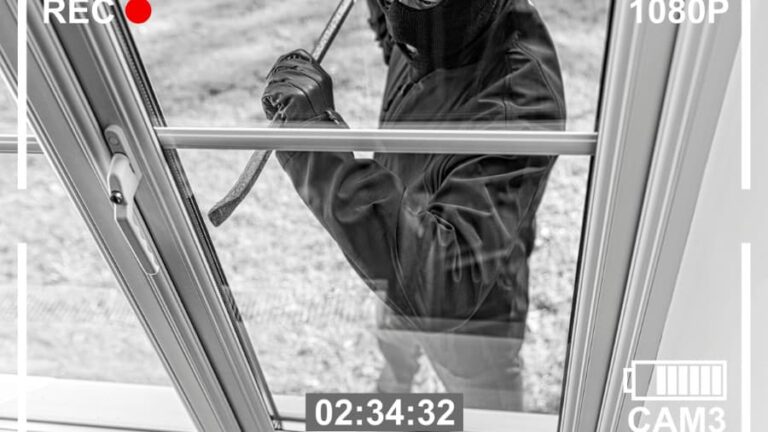How Often Should A Trail Camera Be Set To Take Pictures
It can be difficult to decide how often you should set your trail camera to take pictures. On one hand, you want to make sure you get enough shots of the game or animals you’re trying to photograph. But on the other hand, you don’t want to take so many pictures that your camera’s memory card fills up too quickly.
So what’s the right balance? Let’s explore this question and more!
How often should a trail camera be set to take pictures
The frequency with which a trail camera takes pictures is affected by many different things. The following factors have been shown to change how often a camera traps picture:
- Environmental conditions, such as weather and time of day
- Number of animals in the camera’s detection area
- Camera placement (e.g. on a game trail, near water sources)
Sometimes between-camera differences are due to how the camera is set up instead of actual changes in animal movements or behavior patterns.
For example, you can’t always expect that two cameras that take pictures at different frequencies will have equal probability of capturing an animal – because they may not have equal probability of being activated by a passing animal.
This means that some cameras may be activated more frequently simply because they’re placed where more interactions occur!
How long a camera is set out also affects how often it takes pictures: for example, if you check your camera every 2 weeks rather than once per week, you’ll definitely take fewer photos.
On the other hand, you might not capture as much game movement if you check your camera too infrequently, leading to fewer pictures of animals themselves.
One thing is for sure: how often a camera takes pictures can vary quite a bit, even between cameras in apparently similar conditions (e.g. same location). This means that it’s important to monitor each camera independently and make changes as needed.
How many pictures will a trail camera typically take?
A trail camera can take anywhere from about 5 to 50 pictures per trigger. This number is heavily dependent on environmental conditions, type of batteries used and set-up, location where the camera was placed, and how long you’ve programmed your camera to shoot before triggering its motion sensor.
If you’d like to get more than 10-12 shots in sequence before an animal triggers the sensor, be sure to use Lithium Batteries instead of Alkaline ones since they offer better performance at low temperatures (very helpful during cold weather) and last much longer for between 4-10 times longer than alkaline batteries!
Under the best conditions, a trail camera may take 50 pictures or more in sequence. The number of pictures taken is also dependent on the distance an animal might move before being photographed again. This means that if you place your camera directly in front of a feeding area, it will take fewer photos than if you place it 100 feet away from where the animals are entering the frame.
How often should I check my SD card?
You can typically leave your memory card in your trail Camera without ever having to remove it until it’s full (or almost full). You don’t need to worry about breaking or ruining your SD card by checking it too frequently while still protecting its contents from damage and loss by removing and replacing it each time you check it.
What factors affect how often a trail camera takes pictures?
Environmental conditions, such as weather and time of day, will greatly affect how long your batteries last.
If you live in an area where the temperature drops below freezing at night, be sure to use Lithium Batteries instead of Alkaline ones since they offer better performance at low temperatures (very helpful during cold weather) and last much longer for between 4-10 times longer than alkaline batteries!
Picture frequency will also be affected by differences in power consumption from one type of camera to another.
This means that if you have a basic model with only a few LEDs or no LCD display, it will take more photos in sequence before an animal triggers its motion sensor. On the other hand, if you have a model with more LEDs or an LCD display running for longer periods of time, it will take fewer photos in sequence before an animal triggers its motion sensor.
Time of day also affects the number of pictures taken per trigger.
For example, when using a camera that contains no LED night vision illumination technology (or only uses red LEDs), the number of pictures in sequence before an animal triggers its motion sensor might be much higher during daylight hours than at night when there is little visible light for the camera to capture.
How long should I set my trail camera to take pictures?
You can leave your Trail Camera set up to take photos until your memory card fills up or you’ve reached your desired frame rate (how many photos per trigger).
To see what your camera’s frame rate is, check the user manual or shoot just a few videos to review later. You can save them onto your computer and then play them back to get an estimate of how many pictures per second you’re capturing.
What other factors affect how long your trail Camera takes between triggers?
The type of batteries used as well as the size and number of memory cards installed in your Trail Camera all affect how long it will take between each time your trail Camera takes photos when triggered by movement or sound.
If you’ve set up multiple cameras together at the same site, they might interfere with one another depending on their range, angle of view positioning, and even if they’re using the same types of batteries and memory cards.
Cameras that run on alkaline or lithium batteries will typically interfere with one another less than cameras that use rechargeable ones, since these can be more sensitive and affected by other cameras running nearby.
How many pictures should I take per trigger?
Taking fewer photos per trigger will help reduce the amount of time it takes for your camera to take photos in sequence. If you set your camera to take 5-10 photos before its motion sensor is triggered again, this might be all it needs for as long as the quality and clarity of those images are sufficient for your purposes (if not, consider adjusting based on what you’re after i.e., if you want to know individual animal identities/counts, you might need more clarity such as with a closer zoom).
If your photos are blurry (due to the subject being too far away), consider making adjustments such as zooming in closer or positioning your camera at a better angle that has less background noise.
You can also use Trail Camera without an LCD screen if it doesn’t have one since it won’t waste power displaying pictures when no action is detected by its motion sensor.
When should I set my trail camera up for the best results?
If you live in an area where there’s little cover and many clear views of the surrounding area, mounting your trail camera near sunrise or sunset will help it take better photos in sequence before an animal triggers its motion sensor.
This is especially helpful on cloudy days or in heavily wooded areas where it might be more difficult to adjust your camera’s angle and lighting. If you don’t want every animal to trigger your camera, consider mounting it near a salt lick, berry bush, water source (i.e., dew drip), and trails used by animals entering and exiting the area.
Lastly, position your trail Camera near your stand or blind if you’re using one when hunting since this will help reduce human intrusion into the area (and improve success rates). It also reduces the chance of you spooking off any animals that come within range such as deer during rutting season.
How much does temperature affect how often a trail Camera takes pictures?
Temperature affects all batteries, but especially rechargeable ones since they can’t hold onto their power for as long. This means that when it’s colder out, your trail Camera may take longer to trigger when an animal crosses its path because the batteries need time to warm up so they can maintain enough charge for your camera to take photos in sequence.
If you live in a cold climate or below freezing temperatures are common in your area where you plan on using your trail Camera, consider investing in rechargeable lithium batteries instead of alkaline (they’re more expensive initially but worth the extra cost).
They also typically last longer (with 700-2000 mAh) than regular AA batteries that typically last anywhere from 15-30 pictures per set (200-1500 mAh). You may need to set your camera for fewer pictures per trigger though since it’ll use more power and run through batteries faster.
What else can affect how often a trail Camera takes photos?
Some animals such as squirrels and small rodents will likely take several photos in sequence due to their quick movements and how close they get to the camera (i.e., this is especially common if that animal triggers the motion sensor multiple times within a short time period).
This might not matter much depending on what you’re after, but it’s worth noting if you’re looking to identify individual deer or other larger mammals (and whether they’re male or female).
Trail Cameras are a fun and practical way to get photos of the animals that live in your area. You can use them to keep track of game movements, determine when the best times to hunt might be during fall season, and identify what larger mammals may be living near your property if you have time to review all the pictures it took.







